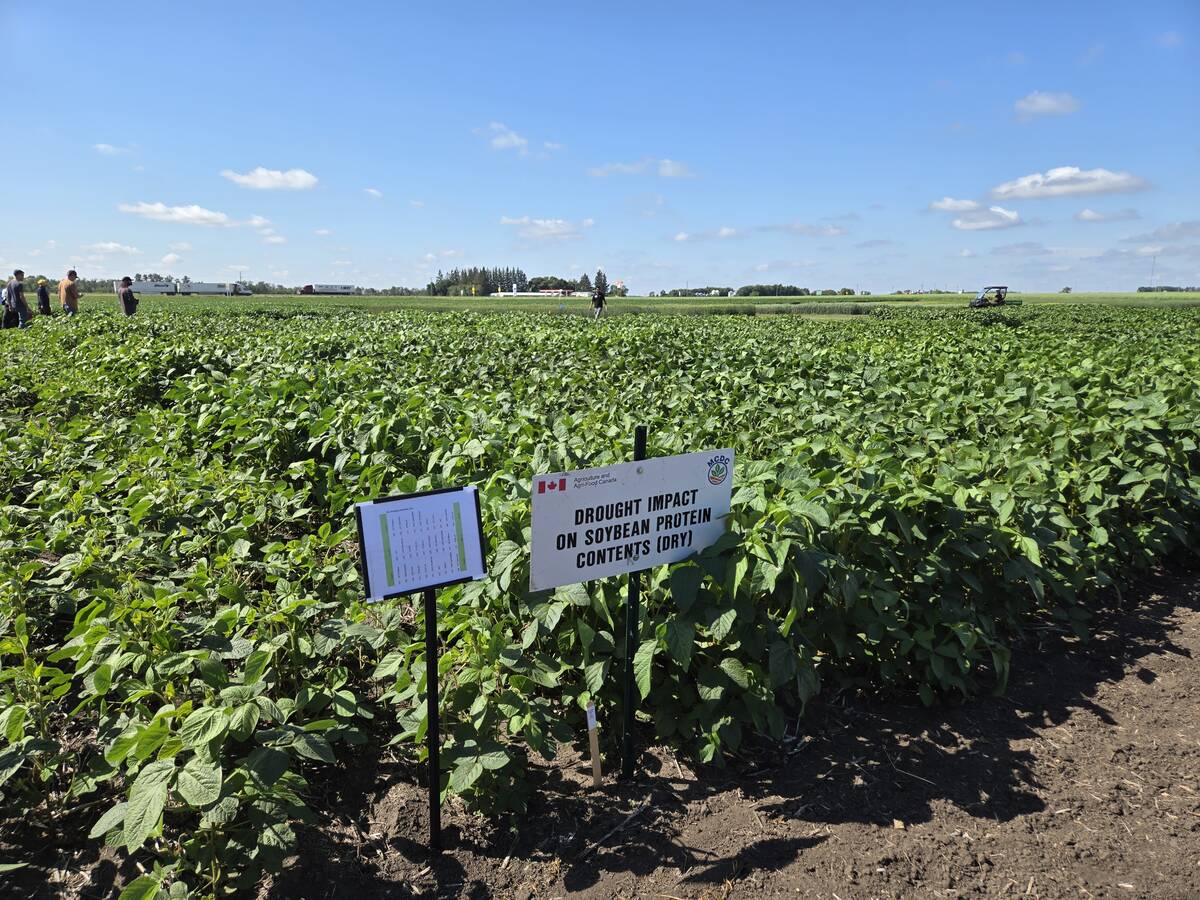Nesting platforms can attract hawks to native prairie grasslands, benefitting both the birds and landowners
There may be fewer ground squirrels next spring at the Johnson property on southern Alberta’s Milk River Ridge.
That’s because there’s a new nesting site designed for ferruginous hawks, which love to eat pesky ground squirrels that proliferate in the area’s arid fescue grassland.
The Nature Conservancy of Canada and Fortis Alberta collaborated Sept. 26 to put up an artificial nesting pole on the 640-acre Johnson site that is surrounded by the Ross Lake Natural Area Grazing Reserve.
Ferruginous hawks are an endangered species, in part due to loss of nesting habitat.
Read Also

Carberry field day looks for agriculture solutions
Manitoba farmers explored research solutions for resilient crops, perpetual agronomic issues and new kinds of agricultural products at a field day at the Manitoba Crop Diversification Centre in Carberry on Aug. 6.
“Ferruginous hawks are an extremely sensitive species,” said Nature Conservancy communications co-ordinator Carys Richards.
“They won’t live near anywhere that’s been disturbed by people, so they don’t like to nest next to gravel roads or by farmyards or by power lines. So all of the locations that they would historically nest are places that people are moving into, and by disturbing these areas, it’s driving the ferruginous hawks away.”
Numbers of this hawk species have declined by more than 50 percent since 1992, she added, so efforts to encourage nesting are welcomed.
“I think it’s really beneficial, not only because these are species at risk but because they can help out ranchers so much to have them on their properties, to try and have these kind of initiatives to bring them back.”
The site erected Sept. 26 included a pole donated by Fortis, a platform donated by the Alberta Conservation Association, a nest built this summer by young people at Southern Alberta Range Days, and a site on property managed by NCC.
One pair of ferruginous hawks will eat an estimated 500 ground squirrels each year, so they are popular with ranchers with rodent issues.
An NCC news release said this species of hawk is native to the North American Great Plains but most of their range is in southern Alberta. They are one of two birds of prey species with grasslands as their main habitat, the other one being the also endangered burrowing owl.
“Ferruginous hawks return to the same nesting area year after year and they are very picky about where they live,” said the news release. “A breeding pair may have multiple nests in one area but will select a single nest to use each year.”
The hawks winter in the southern United States and northern Mexico so they won’t be examining the new nest and site until spring 2019.
As for the nest built by range days participants, it is made from sticks, twigs and zip ties, said NCC natural area manager Leta Pezderic.
With assistance from the ACA and Multisar, a conservation group, the young people used zip ties to build the nests and make them sturdy.
Hawks themselves have their own intricate ways to build, said Pezderic, who frequently sees hawks on NCC property.
“The nests are very basic. I‘m always amazed at how these birds will nest on some of the most uncomfortable, awkward things.”
Even though high winds are frequent and punishing in the region, the nests are able to withstand the elements.
“Some of them are six feet, seven feet tall and they last against storms,” she said.
Fortis and AltaLink, another utility company, have put up numerous nesting platforms in the area, she added, and they are welcomed.
“Landowners are all over this. They would love to have poles put up.”
But ranchers can also put up nesting platforms themselves. The ACA has a brochure that offers instructions on how to do so. It can be found here.
















